Parramatta River Study Tour
Bill Dennison ·As part of the 21st International Riversymposium, a study tour of the Parramatta River was organized by the Parramatta River Catchment Group. The Parramatta River is the major river feeding into Sydney Harbour from the west. They were deserved finalists for the Bert and Vera Thiess Foundation Australasia Riverprize.
Sarah Clift, Executive Director of the Parramatta River Catchment Group (PRCG), and her capable staff organized a great study tour. The PRCG has four part-time employees and eight Riverkeeper ambassadors, with thirty-five partner organizations and eleven councils.
As part of the study tour, we attended the launch of the Parramatta River Masterplan. The Masterplan is a beautiful 86-page document designed by Nadia Young, communications officer at PRCG. I love the colorful document, as well as the collaborative manner in which it was produced. The essence of the Parramatta River Masterplan is detailed in ten steps: 1) Get swimming, 2) Keep watch, 3) Create new swimming spots, 4) Standardize the standards, 5) Reduce stormwater run-off, 6) Improve overflows, 7) Involve the community, 8) Bring in nature, 9) Report back regularly, and 10) Create clear leadership.
The Masterplan includes a description of the five animal mascots sponsored by the Parramatta River Catchment Group: 1) Bar-tailed godwit, 2) Striped marsh frog, 3) Eastern long-necked turtle, 4) Southern Myotis, and 5) Powerful Owl. These mascots were chosen by the community through a consultative process and they serve as biological indicators that link to the goal of having a swimmable river by 2025.
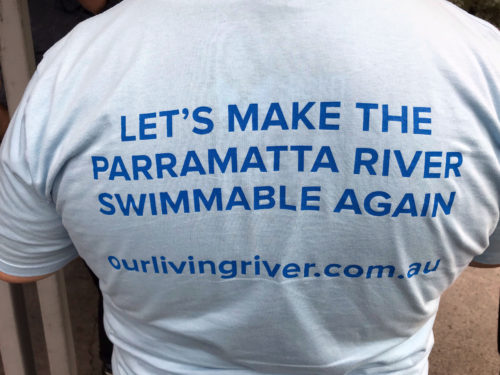
We made five stops over the course of the day, roaming from the headwaters to near the mouth of the Parramatta River. We learned that Parramatta means “place of the eels”. We joked that the Parramatta Eels--the National Rugby League footy team--actually means “place of eels Eels”.
Stop #1: Connection Centre, a public meeting area alongside a river park. A two-person musical group called “Junkyard Beats” made music out of everyday objects, welcoming us to the event. The major goal of the Parramatta River Catchment Group is to have the Parramatta River swimmable by 2025. The launch event was emceed by Costa Georgiadis, a television personality from ABC's Gardening Australia. Several of the elected officials were called upon to unveil the next sites that are targeted for swimming beaches.
Stop #2: Little Coogee Parramatta River weirs. We visited Little Coogee Park, where we could see, hear, and smell a large colony of flying fox fruit bats. There were a lot of plantings under the bat colony aiming to restore some of the vegetation destroyed by the rain of acidic guano.
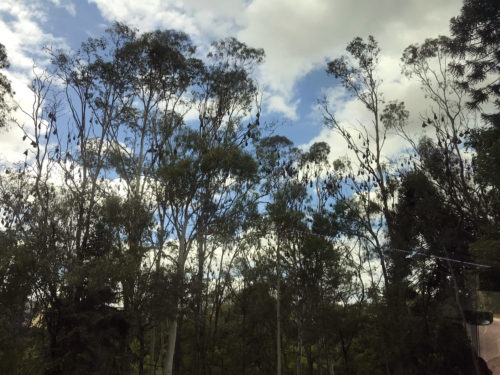
Stop #3: Lake Parramatta. We had lunch at a picnic area next to Parramatta Lake. Then, we were shown the swimming area at the lake by the former Parramatta Lord Mayor Scott Lloyd. It was amazing to be well within the urban footprint of the city of Parramatta and yet experience a very natural setting for the swimming area. This success story occurred on Australia Day, on 24 January 2015, after 72 years of the lake being closed to swimming due to pollution. On the day we were there, there was a work crew preparing the swimming area for the weekend opening.
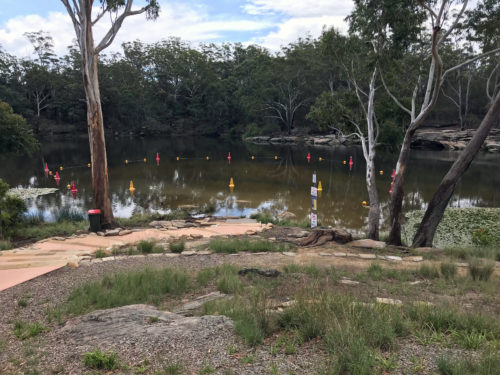
Stop #4: Sydney Olympic Park. We visited the site of the 2000 Summer Olympics and were given a tour of the Healing Center, which is being run by aboriginal Australians. Dr. John Hunter, an ethnobotanist, provided an introduction to their vision. We also looked at some restored salt marsh and mangrove areas, and learned that the rate of relative sea level rise was around 6 mm per year--an extremely rapid rate. This rapid rate of relative sea level rise could account for some of the dead and dying gray mangroves (Avicennia marina) on the river banks. We also did some aboriginal painting, listened to some diggeredoo music, and heard some stories of the Parramatta River. I was pleased to see a coolamon in the Healing Centre since that is the symbol used for the International Riverprize.
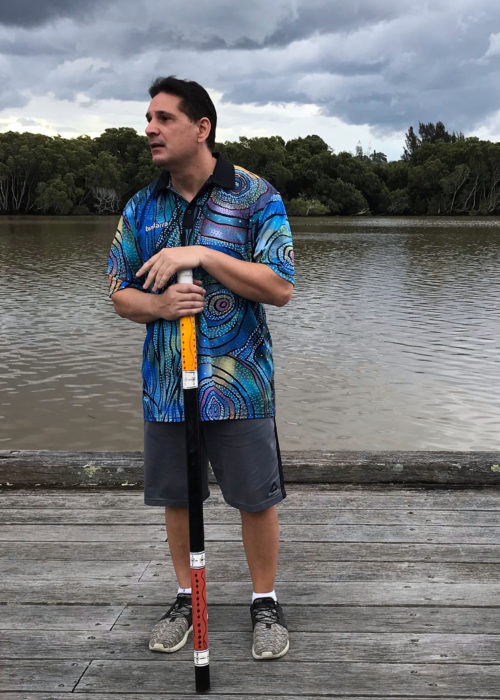
Stop #5: Powell’s Creek restoration project. Powell’s Creek is a tributary of the Parramatta River that has recently undergone a major restoration. The Creek was converted from a straight concrete ditch into a sandstone-lined channel with riparian vegetation. Bicycle and walking tracks alongside the creek bank were also constructed and are already being utilized. The restoration project included restoring connectivity with the adjacent salt marshes and mangroves.
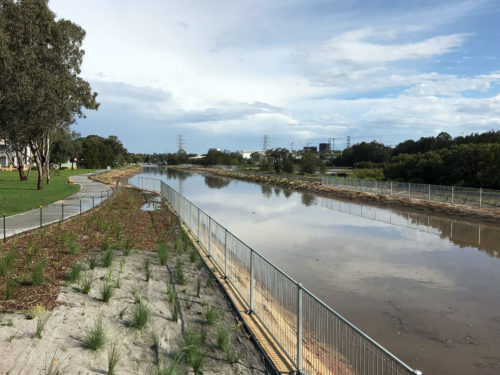
One of the best parts of a field trip is the chance to talk informally with other Riversymposium delegates. We had a diverse group and we spent a long day traveling, with ample opportunities to talk with one another at the various stops. Sarah and her team did a great job and it was a very informative and enjoyable day.
About the author
Bill Dennison

Dr. Bill Dennison is a Professor of Marine Science and Vice President for Science Application at the University of Maryland Center for Environmental Science.

